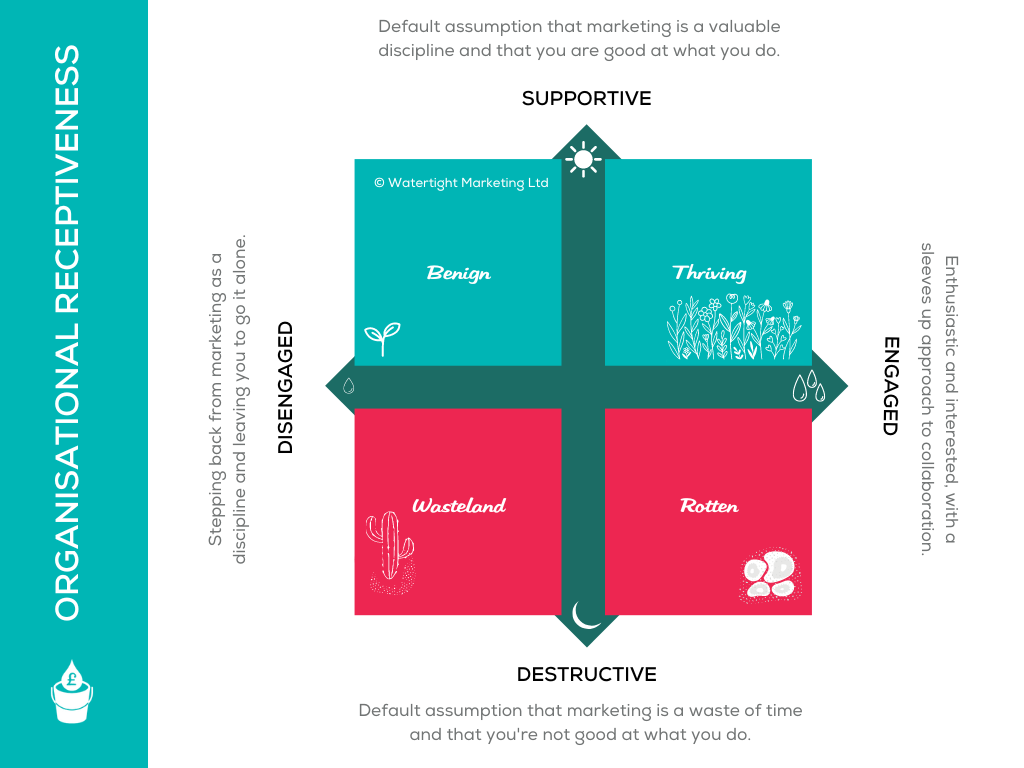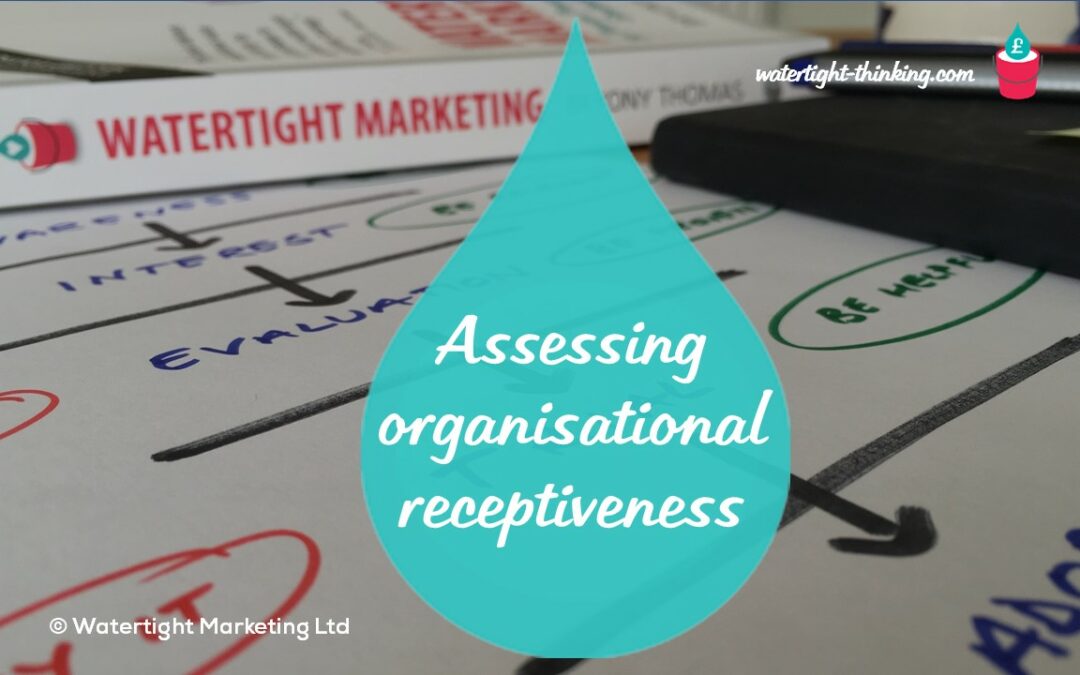Reading Time: 8 Minutes
Why is it that the same marketer can thrive in one organisation and shrivel in another? Assuming a similarly decent product, market, budget, etc. — when it comes to marketing, we think there are two other key ingredients to look for from the leadership team and key players in other disciplines. Let’s look at the impact of differing levels of leadership support and engagement. ~ Bryony Thomas, Author | Watertight Marketing
Listen to the session podcast here
56 – minute roundtable discussion on how your colleagues percive marketing.
Read the write up here
12 – minute read. The write up from the round table discussion on how to shift the perception of marketing in your organisation
When I think of roles and clients where I’ve been able to to truly do my best work, and those where I’ve felt somewhat thwarted, there are definitely common features in the way that non marketing leaders, particularly the MD & FD, engage with me (and marketing as a discipline).
The best way I can define this is to think of two axes:
- Support: What’s the default view of marketing, and of me as the marketing lead. Do people see it as important, or peripheral? And, what about views of the competency of the team, are we seen as respected professionals?
- Engagement: How involved do people make themselves? Do they show up for meetings, participate fully whilst there, and do their bit when asked?
If we think of these as the sun and water on your marketing garden, you’ll start to see that there four basic states of receptiveness.

Imagine that the support of marketing and the marketers in the organisation is like the sun, and their engagement with it is the water.
In a highly supportive setting, the default assumption is that marketing is a valuable discipline and that you are good at what you do. This is like gardening in sunlight, where in the opposite context you’re trying to nurture your plants in the dark.
In a highly engaged setting, your colleagues and leaders are enthusiastic and interested, with a sleeves up approach to collaboration, this keeps those plants watered. The converse is that you’ll be trying to grow veggies in a desert.
This leads to four key states of receptiveness:
- Thriving: This is what we all want. You’re trusted and respected, and your colleagues get involved – contributing ideas, preparing excellent content, etc. This is where the very best marketing happens.
- Benign: Highly supportive, but working with you at arms’ length, almost abdicating responsibility. In this environment, you’ll do ok – but you’ll never have the expert substance and input from your non-marketing colleagues to really do your best. It’s ok, if a bit lacklustre.
- Wasteland: This is where you’re tolerated rather than respected, and also left entirely to your own devices. There’s a disconnect in this that means even your best work goes to waste, with colleagues who won’t get on board.
- Rotten: This is deeply frustrating. They have a low opinion of marketing and marketers, but also meddle and sabotage your every move. They turn up to meetings, not to collaborate, but to criticise. This is a horrible environment for any marketer.
Getting the positive support and engagement of your leaders and colleagues is critical to setting the context in which marketing and marketers can thrive.
Take a look at our conversation on how to do this at: How to get your colleagues on board with marketing
© Watertight Marketing Ltd

Bryony Thomas
Author & Founder, Watertight Marketing
Bryony Thomas is the creator of the multi-award winning Watertight Marketing methodology, captured in her best-selling book of the same name. She is one of the UK's foremost marketing thinkers, featured by the likes of Forbes, The Guardian, Business Insider and many more, and in-demand speaker for business conferences, in-house sales days and high-level Board strategy days.


